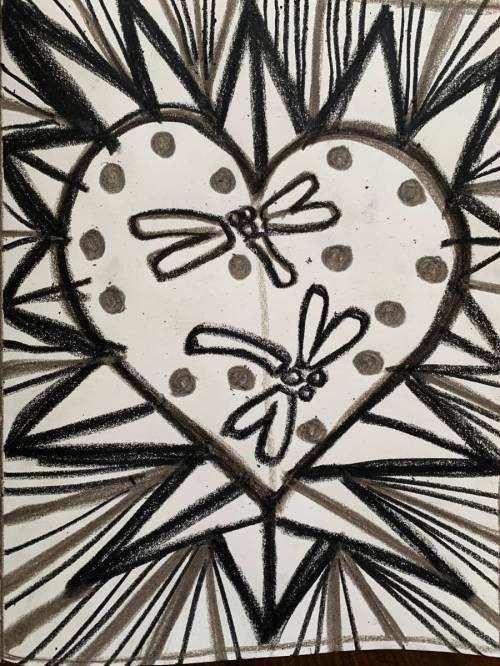
Connect with your Taíno ancestry, Abuela said when I complained about my stomach ache.
What does Taíno ancestry have to do with my pain? I asked. My eight-year-old mind did not get it.
Ancestry has to do with EV-RY-THING, Abuela replied. Her response reminded me of my third-grade teacher, Mrs. Roca, who emphasized each syllable when making a point. Abuela saw my inquisitive expression and added: Your ancestry helps you to heal by connecting with everything.
How is that?
I will show you, Abuela said. First, te santiguo (I bless you).
Abuela made the sign of the cross, first over my head, and again over my belly. Her solemn expression reminded me of the priest when he blessed the host during communion.
Were the Taínos Catholic? I asked in disbelief, knowing that Mrs. Roca taught me that the Taínos worshiped many gods and goddesses.
Abuela laughed at my question. Then she said: The essence of all spiritualities is the same.
What do you mean?
Let me give you and example, Abuela replied. Our great Taíno Spirit, Yaya, is the same as the Christian heavenly Father. The goddess Atabeyra is the Virgin Mary, and her son, the god Yocahu, is Jesus.
I don't get it, I said in a low voice.
Abuela breathed heavily and ignored my comment. It took me many years to understand her explanation.
Now you purge to relieve your bellyache, Abuela instructed.
How do I purge?
We will do it the Taíno way, Abuela said. During their spiritual ceremonies the Taínos sang, danced, and communicated with their cemíes (gods) and ancestral spirits.

Abuela flashed an enigmatic smile and continued: To purify themselves, they prepared succulent meals and after eating them, they put sticks down their throats to vomit.
I took step back and shouted: I'm not putting a stick down my throat.
You don't have to vomit to purge, Abuela explained. I will help you with a limpia (spiritual cleansing).
We went to her garden and gathered the ingredients for the limpia. Abuela picked up ruda (rue), romero (rosemary), and albahaca (basil) leaves. She poured water in a palangana (basin) and mixed the leaves with the water.
This is spiritual water, Abuela explained. Then, she washed her hands in the spiritual water. Afterward, she went to her room and came back with a maraca. This is a Taíno maraca de curación (healing), she said with a broad smile.
Abuela asked me to stand up. She shook the maraca up and down, all around my body. The maraca de curación helps you to purify, she explained. Afterward, Abuela went to the kitchen. She returned to the living room holding an uncooked egg.
As soon as I saw the egg, pain pierced my stomach. We've already eaten lunch, I said in a tremulous tone.
Don’t be scared, Abuela said. She sang my favorite bolero, Soñando con Puerto Rico (Dreaming with Puerto Rico) to calm me. When Abuela finished singing, she asked me to lie on the sofa. Place your hands on your chest, she instructed. Your heart will help you heal.
Abuela closed her eyes for a few moments. She looked like she was meditating. When she opened her eyes, she said: Mother Atabeyra, heal through me.
Soon thereafter, Abuela put the egg on my belly. In seconds, my pain was gone! Abuela looked into my eyes and said: I invited the spirit of the egg to take in your pain.
I touched the egg and gasped. It was hot! At that moment I understood why my father called Abuela a curandera (healer).
Now we give thanks, Abuela said with a big smile. And then we dance.
We danced to the merengue music that Abuela loved so much. I had no pain for the rest of the day. The next morning, I drew a heart and showed it to Abuela.

Abuela took the drawing in her hands and said: This is a beautiful picture. She kissed the heart and added: Creativity helps to heal.
After my Taíno limpia, I wondered how curanderas heal people. I asked Abuela: How can I prevent future bellyaches?
It is simple, Abuela replied. Treat your body as a sacred vessel and keep it healthy.
How do I keep my body healthy?
Practice buen vivir (to live well, wellness), Abuela replied.
What is buen vivir?
Buen vivir means that you respect the spirit that inhabits every living being: humans, animals, trees, and plants - as well as nature elements like rocks, rivers, mountains, the earth, and the sea. We can communicate with their spirits.
Like what you did with the egg?
Yes - I asked the egg’s spirit for permission to receive your pain.
Can I learn to heal?
Of course. You can use your spiritual don (intuition) to heal. Abuela placed her right hand over her left bosom and said: Remember that the most important thing is to heal with your heart.
Many years later, my interest in healing led me to become a psychologist. Accompanying others in their healing journey nurtures my spiritual strength. Moreover, it revitalizes my commitment to healing. However, during the COVID-19 pandemic I have struggled to maintain my internal equanimity while helping my clients/patients. Then, I recalled Abuela’s healing lessons rooted in buen vivir:
Abuela’s Lessons for Healing and Living Well
1. Connect with your ancestral legacy
2. Nurture your spiritual don (intuition)
3.Treat your body as a sacred vessel
4. Cultivate positive thoughts and emotions
5. Celebrate (sing, dance, and connect with joy)
6. Meditate (visualize, pray, contemplate, etc.)
7. Engage in creativity
8. Ask for help
9. Be grateful
10. Heal with your heart
Abuela died many years ago, but at times I still feel her with me. I practice her healing lessons by connecting with my ancestral legacy. I nurture my spiritual don and aim to live well. Above all, I remember that the most important thing is to heal with my heart.
Photography: Frederick M. Jacobsen
Art/Drawing: David Comas-Díaz